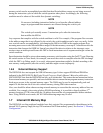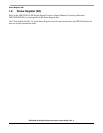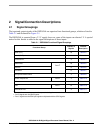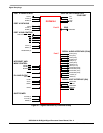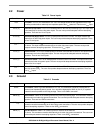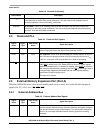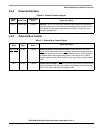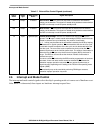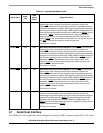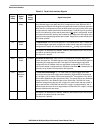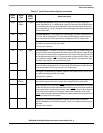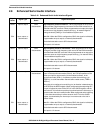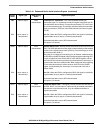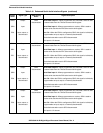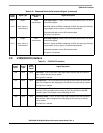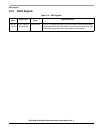
Serial Host Interface
DSP56364 24-Bit Digital Signal Processor Users Manual, Rev. 2
Freescale Semiconductor 2-7
2.7 Serial Host Interface
The SHI has five I/O signals that can be configured to allow the SHI to operate in either SPI or I
2
C mode
Table 2-8 Interrupt and Mode Control
Signal Name
Signal
Type
State
during
Reset
Signal Description
MODA/IRQA
Input Input Mode Select A/External Interrupt Request A—MODA/IRQA is an active-low
Schmitt-trigger input, internally synchronized to the internal system clock.
MODA/IRQA
selects the initial chip operating mode during hardware reset and
becomes a level-sensitive or negative-edge-triggered, maskable interrupt request
input during normal instruction processing. MODA, MODB, and MODD select one
of 8 initial chip operating modes, latched into the OMR when the RESET
signal is
deasserted. If IRQA
is asserted synchronous to the internal system clock,
multiple processors can be re synchronized using the WAIT instruction and
asserting IRQA
to exit the wait state. If the processor is in the stop standby state
and IRQA
is asserted, the processor will exit the stop state.
This input is 5 V tolerant.
MODB/IRQB
Input Input Mode Select B/External Interrupt Request B—MODB/IRQB is an active-low
Schmitt-trigger input, internally synchronized to the internal system clock.
MODB/IRQB
selects the initial chip operating mode during hardware reset and
becomes a level-sensitive or negative-edge-triggered, maskable interrupt request
input during normal instruction processing. MODA, MODB, and MODD select one
of 8 initial chip operating modes, latched into OMR when the RESET
signal is
deasserted. If IRQB
is asserted synchronous to the internal system clock,
multiple processors can be re-synchronized using the WAIT instruction and
asserting IRQB
to exit the wait state.
This input is 5 V tolerant.
MODD/IRQD
Input Input Mode Select D/External Interrupt Request D—MODD/IRQD is an active-low
Schmitt-trigger input, internally synchronized to the internal system clock.
MODD/IRQD
selects the initial chip operating mode during hardware reset and
becomes a level-sensitive or negative-edge-triggered, maskable interrupt request
input during normal instruction processing. MODA, MODB, and MODD select one
of 8 initial chip operating modes, latched into OMR when the RESET
signal is
deasserted. If IRQD
is asserted synchronous to the internal system clock,
multiple processors can be re synchronized using the WAIT instruction and
asserting IRQD
to exit the wait state.
This input is 5 V tolerant.
RESET Input Input Reset—RESET
is an active-low, Schmitt-trigger input. When asserted, the chip
is placed in the reset state and the internal phase generator is reset. The
Schmitt-trigger input allows a slowly rising input (such as a capacitor charging) to
reset the chip reliably. When the RESET
signal is deasserted, the initial chip
operating mode is latched from the MODA, MODB, and MODD inputs. The
RESET
signal must be asserted during power up. A stable EXTAL signal must be
supplied before deassertion of RESET
.
This input is 5 V tolerant.



